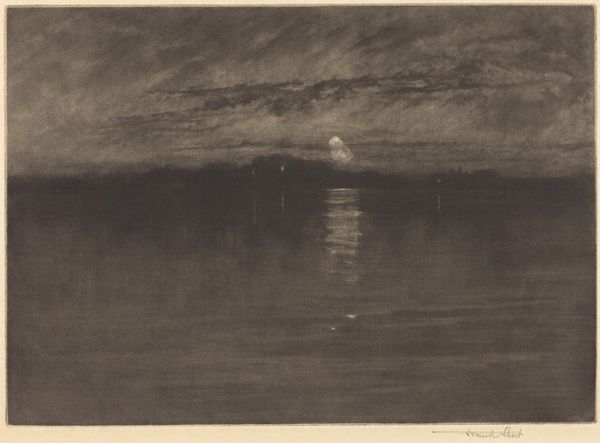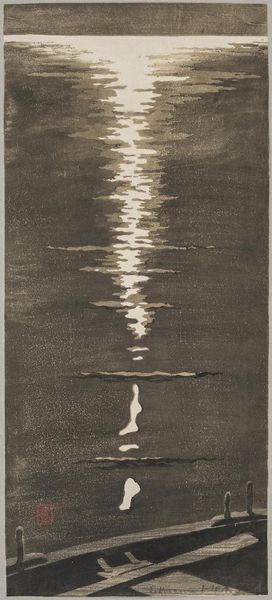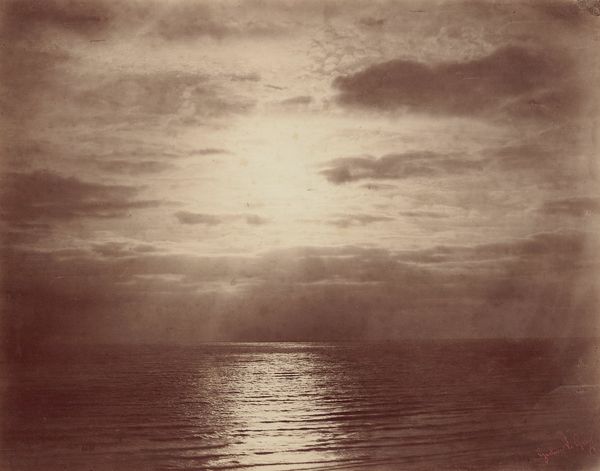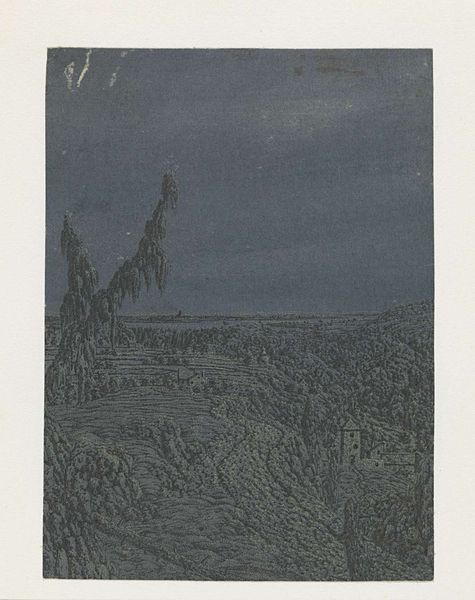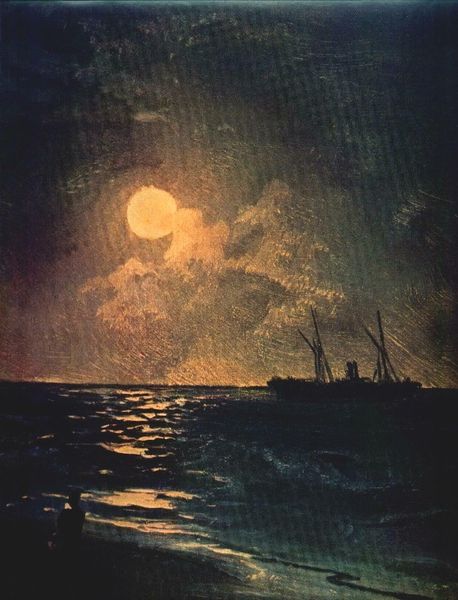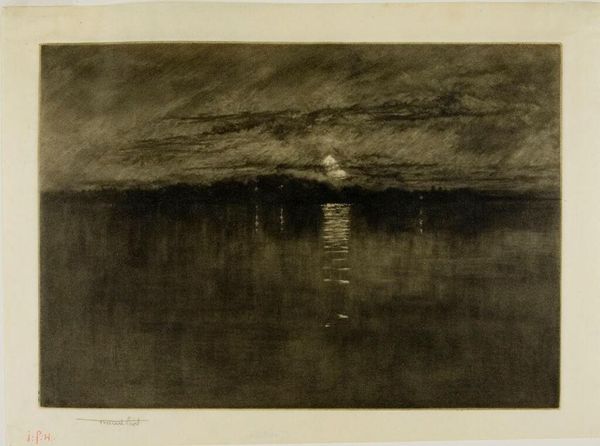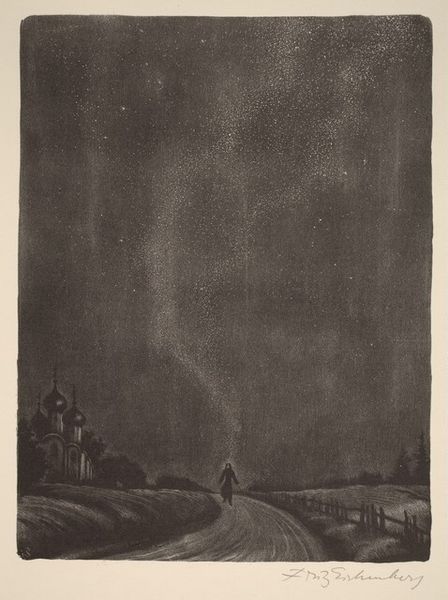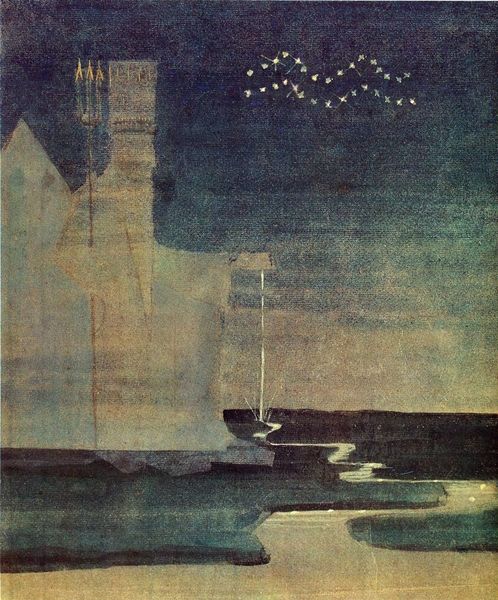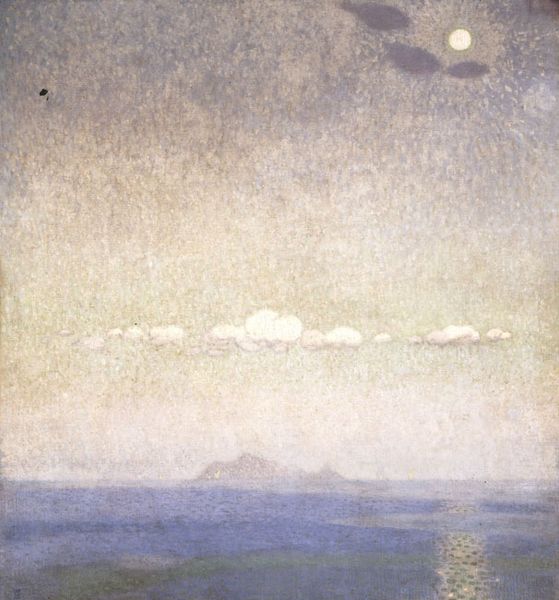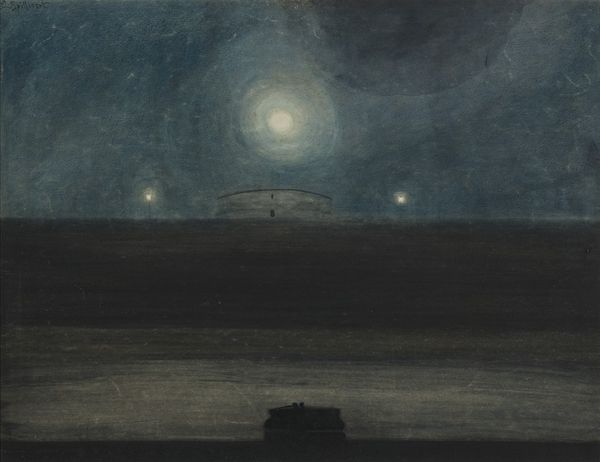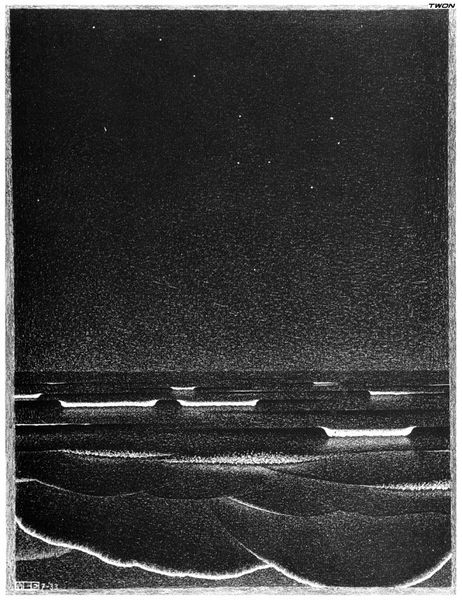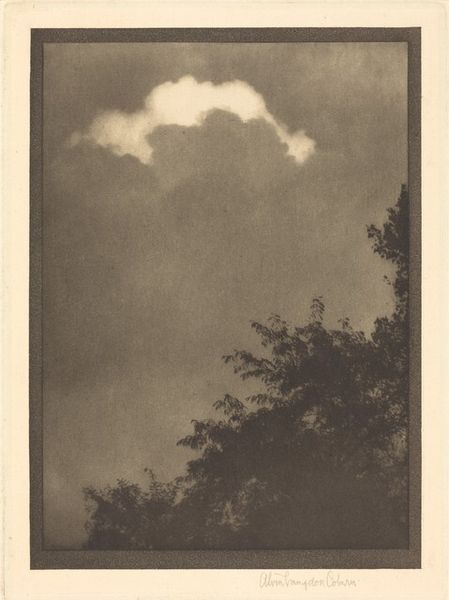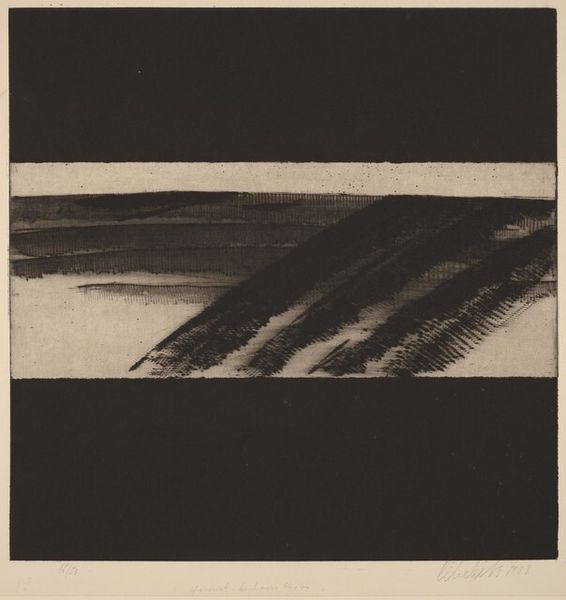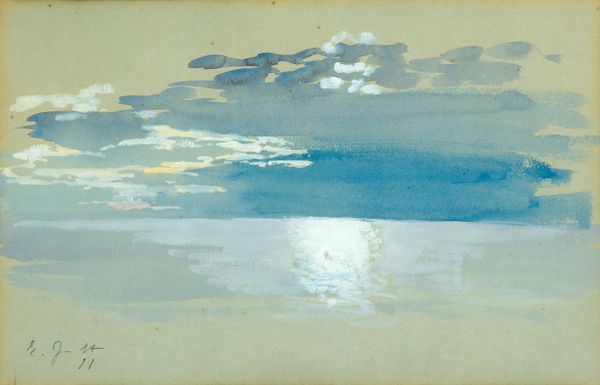
print, woodcut
#
still-life-photography
# print
#
landscape
#
woodcut
#
symbolism
Dimensions: plate: 20.8 x 15.6 cm (8 3/16 x 6 1/8 in.) sheet: 3.13 x 22.5 cm (1 1/4 x 8 7/8 in.)
Copyright: National Gallery of Art: CC0 1.0
Editor: Here we have Karl Wilhelm Arthur Illies’s "Moonshine on the Elbe," created in 1898 using woodcut printmaking. I am immediately drawn to the way the moon is rendered against this dark, somber landscape. How do you interpret this work, especially considering its historical context? Curator: Well, the Elbe was not merely a river, but a critical artery of trade and industry in a rapidly industrializing Germany. Illies’ choice to depict it under moonshine, using the traditional woodcut, elevates a modern subject through historical art. What might seem a tranquil scene actually underscores anxieties around the shift from agrarian life to modernity. Does the rendering of light feel unsettling? Editor: Yes, there’s something stark about the moon’s reflection, almost harsh. How did this kind of imagery function in the public sphere at the time? Curator: These kinds of prints, though seemingly innocuous landscapes, often served as a powerful form of cultural commentary. Artists like Illies leveraged symbolism—notice the single moon against the dark water—to evoke a sense of longing for a simpler past, while also acknowledging the unstoppable tide of industrial progress. It raises the question, what kind of power structures are implied when the ‘natural’ light overpowers the industrious dark waters of the Elbe? Editor: So, the visual language itself is a form of political or cultural statement. The stark contrast really brings that to the forefront now that you mention it! Curator: Precisely. Museums and galleries then, much like now, became vital spaces for negotiating these complex dialogues, shaping public sentiment and contributing to a shared cultural identity. Understanding these pieces requires a look at socio-political currents beyond what’s visually apparent. Editor: That's fascinating, considering it initially struck me as simply a beautiful, if somewhat melancholic, landscape. Now, it is apparent how deeply embedded in cultural concerns and dialogue the work truly is! Curator: And for me, it's a reminder of how artistic techniques can serve not just aesthetic goals but profound historical dialogues too.
Comments
No comments
Be the first to comment and join the conversation on the ultimate creative platform.
